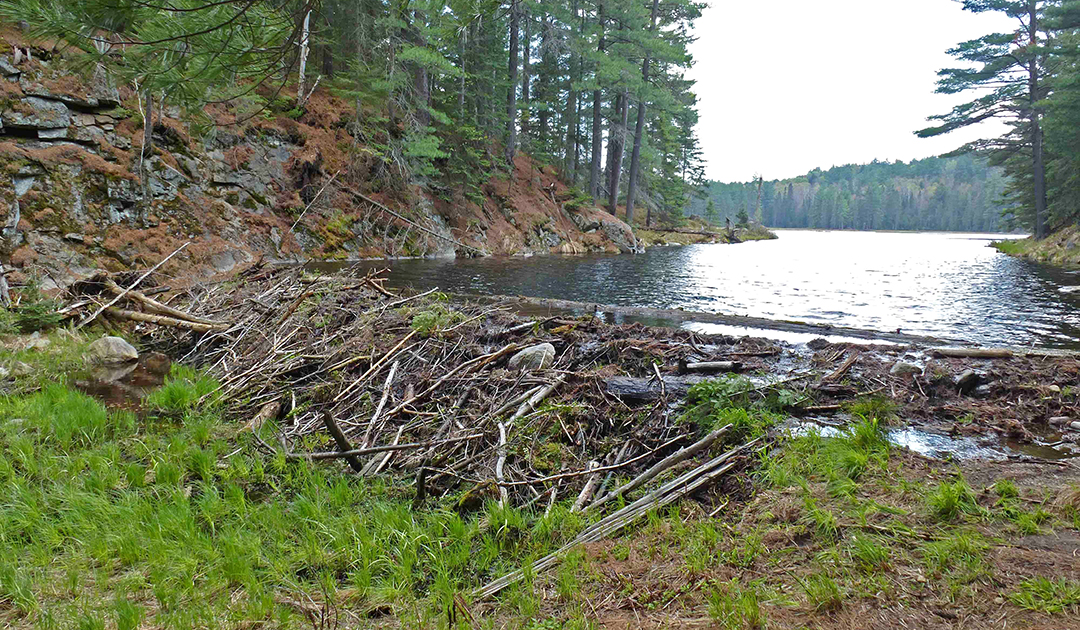
The fact that new species are constantly migrating to the Arctic as a result of the changing climate is well known. The fact that they are changing local ecosystems in the process is also nothing new. The same is true for the North American beaver, which is expanding further into Alaska while changing its new habitat. But what a new study shows is the astonishing scale of the changes and the speed. Because both are visible from space.
More than 11,000 ponds caused by beavers in the region between the Seward Peninsula and the Brooks Mountain Range are visible on satellite images analyzed by a U.S. research group from the University of Alaska with the participation of two scientists from the Alfred Wegener Institute. Extrapolating to the entire area defined by the authors as Arctic Alaska, there are well over 12,500 total pools created by beavers since the early 1980s. The spread is currently only slowed by the Brooks Range running across Alaska. The changes in the affected region that have resulted appear to be leading to further thawing of the permafrost and an amplification of the climate warming already at work, the team writes in their paper, published in Scientific Reports.



Beavers were unknown in the Arctic tundra of Alaska until the 1980s. But the local population of places like Kotzebue on the Seward Peninsula observed increasingly frequent pools and dams built by the busy rodents over the years. So Dr. Ken Tape of the University of Alaska Fairbanks and his colleagues set out to determine how much and how far beavers had now taken over the warming region. To do this, they examined satellite and aerial photographs since 1949 and compared them with each other, and also visited such sites for verification. In the process, they discovered that, in fact, the first dams and pools began appearing in the mid-1970s, but then spread across the region at an increasingly rapid pace, heading toward the Brooks Mountain Range. “All they had to do was swim downstream,” Ken Tape explained in an interview with the Business Insider platform. Especially between 2000 and 2019, the number of beaver-induced ponds and lakes doubled, sometimes covering several hectares.

The research team also discovered that many of the ponds and lakes remained in the landscape, changing the face of the region in the long term and likely increasing the effects of climate warming on permafrost. This is because the lakes and ponds with their dark water surfaces absorb much more of the sun’s heat and conduct it to the bottom, where it melts the permafrost. In addition, the ponds alter the hydrology of the region by allowing runoff water to transport heat further, affect the habitat of plants and other animal species such as fish, insects, and mammals, and could also have an impact on meteorological conditions in the region. The list of new questions arising from the findings of the study by Dr. Ken Tape and his colleagues is long. For Tape and the team, along with more intense brush fires, flooding and breaking permafrost, the animals are another new disturbance that climate change has brought to the Arctic region of Alaska, and one that is here for the long haul. “If you liked the Arctic the way it used to be, beavers are bad for it,” Ken Tape says. “But if you accept this new arctic, beavers are really the new champions.”
Dr Michael Wenger, PolarJournal
Link to the study: Tape, K.D. et al. Expanding beaver pond distribution in Arctic Alaska, 1949 to 2019. Sci Rep 12, 7123 (2022). https://doi.org/10.1038/s41598-022-09330-6
Contributed image: North American beaver in Canada, image: Wikicommons CC BY-SA 3.0
More on the topic






Oh great so beavers are now public enemy #1 in terms of climate change. Maybe the human race is really the problem that causes migration of other species in order to survive. Stop building space vehicles going to Mars and plant some trees on Earth🙄🙄